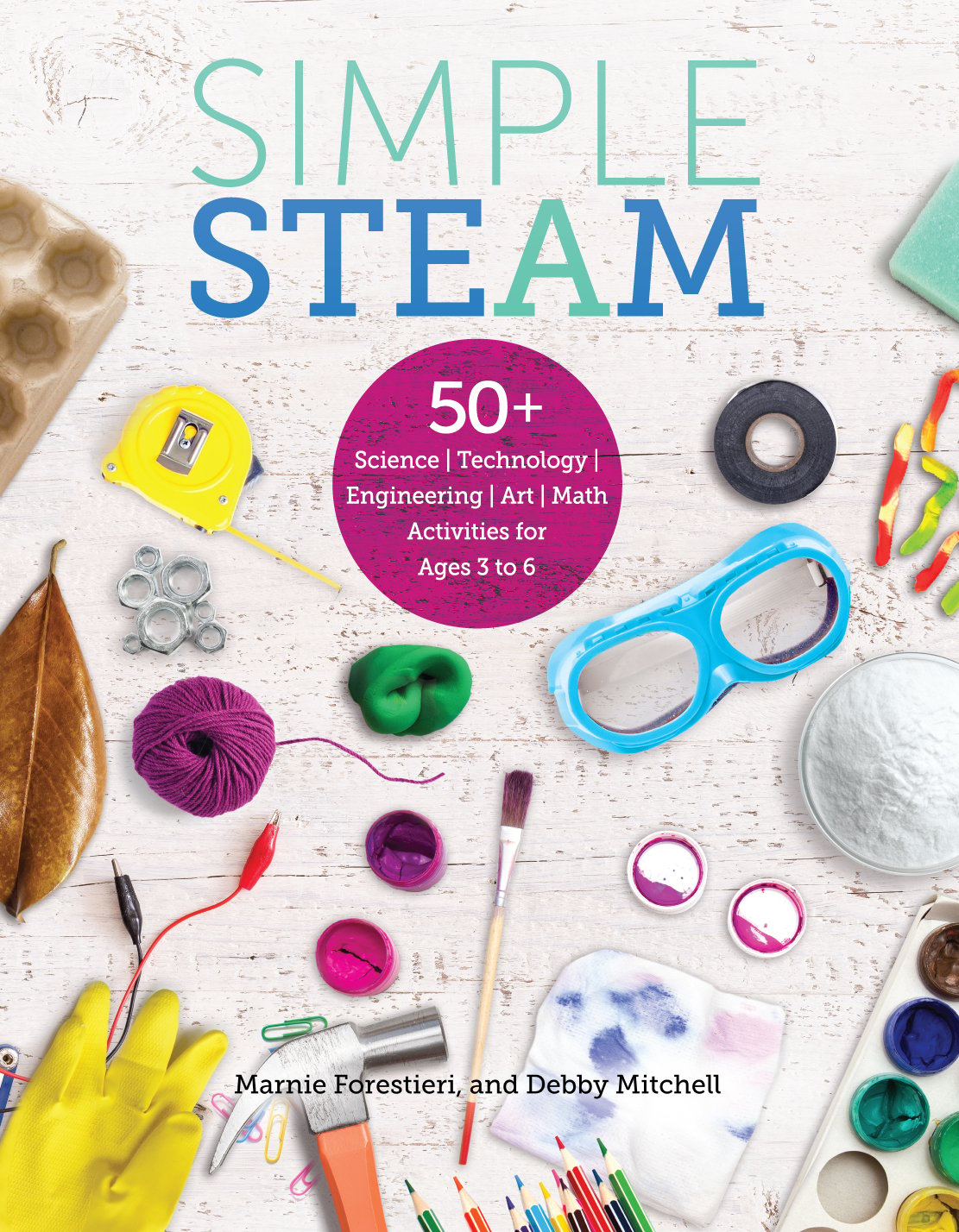World Space Week is October 4-10 and is the biggest space event celebrated on the planet. Every year, this week is used to commemorate the contributions of space science and technology to the improvement of humankind all around the world.
Did You Know?
- American rocketry pioneer Dr. Robert H. Goddard tested his first liquid-fueled rocket in 1926.
- The first rocket that could fly high enough to reach space was Germany’s V2 missile, launched in 1942. The first rocket that launched something into space was used to launch Sputnik, the first satellite, in 1957.
Here is a STEAM rocket activity from Simple Steam: 50+ Science Technology Engineering Art Math Activities for Ages 3 to 6 that introduces the concepts of propulsion and force. Children will make rockets that they can launch by blowing into a straw.
Straw Rocket
Talk Like Engineers
- Air resistance: a pushing force that slows things down
- Force: a push or pull on an object; in this case, how hard you blow or push air through the straw
- Gravity: a force that pulls things toward Earth
- Launch: to send or shoot something, such as a rocket, into the air, water or outer space
- Propel: to drive forward or onward by means of a force
- Rocket: a cylindrical projectile that can be propelled to a great height or distance by the combustion of its contents
What You Need
- Straws—regular and smoothie size (with larger diameter)
- Tape or glue
- Markers or crayons
- Scissors
- Paper
- STEAM journal
How to Do It
- Talk about how you will be making a simple paper rocket. Ask your child what she knows about rockets. Talk to your child about how aerospace engineers design, build, and launch rockets. You may want to look up videos about rockets and aerospace engineers to learn more.
- Draw a picture of a rocket for your child.
- Invite your child to color the rocket and cut it out.
- Using the larger straw, tape or seal one end so it’s completely sealed.
- Cut the larger straw to fit the length of the rocket and attach it to the rocket with tape or glue with the sealed end at the top of the rocket.
- Slide the smaller straw into the larger straw.
- Point the straw up and blow into the straw to see the rocket take off.
- Encourage your child’s’ curiosity: Why do you think the rocket falls back to the ground after being launched into the air?
- Encourage your child’s critical-thinking skills: What can you tell me about launching a rocket?
Instructions
Make several animal stick puppets (at least one per child). Laminate them and
glue them to craft sticks.
* On a shower curtain, draw a pond. Draw lily pads in the pond. On each pad
write a rhyming word from In the Small, Small Pond.
What to Do
1. Lay the shower curtain on the floor. Place animal markers face up on the lily
pads with which they coordinate. For example, place dragonfly markers on the
words "shiver" and "quiver."
2. Introduce the children to the concept of rhyming.
3. Read the story In the Small, Small Pond by Denise Fleming.
4. Give each child an animal stick puppet and challenge the child to "hop" or
"fly" that animal to the lily pad with the matching animal's image on it.
5. When the children land on those lily pads, read the rhyming words on the lily
pads, and then ask the children to repeat the words back to you.
6. Put the cards back down on the lily pads and ask the child to hop to the next
pad with the matching animal on it, then to say both the word from the first
lily pad and the word from the new lily pad. Assist the children if they are
having any difficulty with this part of the activity.
7. Continue until the children say all the rhyming words associated with their
animal or insect.
Assessment
Consider the following:
* Can the children find the correct lily pads?
* Can the children remember the rhyming words from one lily pad to the next?
